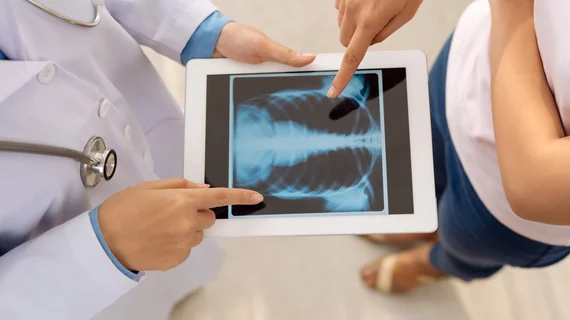8 tips to help radiologists communicate with patients and physicians
Traditionally, the bulk of radiologists’ interactions have been with referring providers via the written radiology report. But those practicing in today’s healthcare environment must learn to communicate directly with other doctors, patients and radiology team members.
And the specialty’s move toward value- and patient-centered care only emphasizes the need for more effective communication, a group of five radiologists explained April 10 in Academic Radiology. Top imaging advocates and educational groups have also emphasized these skills, but many rads still lack the necessary exposure.
“Despite the importance given to communication by the Accreditation Council for Graduate Medical Education, the American Board of Radiology and the ACR, trainees may not receive formal education to develop and/or improve their communication skills,” Judah Burns, MD, with Montefiore Medical Center’s Department of Radiology, and colleagues added.
Below are tips for radiologists to help develop their gift of gab.
1. The best radiology reports use concise descriptions, clear language and conclusions, and relevant information for follow-up imaging. A clinician-friendly report is also beneficial for patients, the authors noted.
2. The conclusion and summary sections are the most significant for patients. Rads should avoid repeating words, clearly summarize their findings and limit uncertainty, paying particular attention to the latter.
3. Radiologists often work with limited patient history, but including this information in the written report indicates they are heavily invested in a patient’s care.
4. Structured reporting templates can help trainees learn to organize their observations and enhance communication with physicians. At the same time, patients can more easily discern findings and discuss options with their doctor.
5. Thinking outside traditions and including multimedia content, tables, images and other data points enhance text-only reporting and further both physician and patient understanding.
6. Online portals are a chance to enhance patient interactions. Imaging providers must keep this in mind during reporting and develop strategies to avoid unnecessary anxieties. Providing radiologists’ contact information, performing web consults or end-of-visit summaries should all be considered.
7. RSNA and the ACR have published aspirational guidelines to increase rads’ direct consultations and oral communication roles to enhance their visibility. Rounds with referring clinicians, reading rooms in clinical areas, multidisciplinary meetings and virtual consults can improve communication with patients and providers.
8. Non-verbal communication is also key, the authors explained. Eye contact, nods, physical gestures and posture can convey empathy. These cues, and many others, can affect patient’s perception and impact the relationship with healthcare team members
Read the entire special review here.

